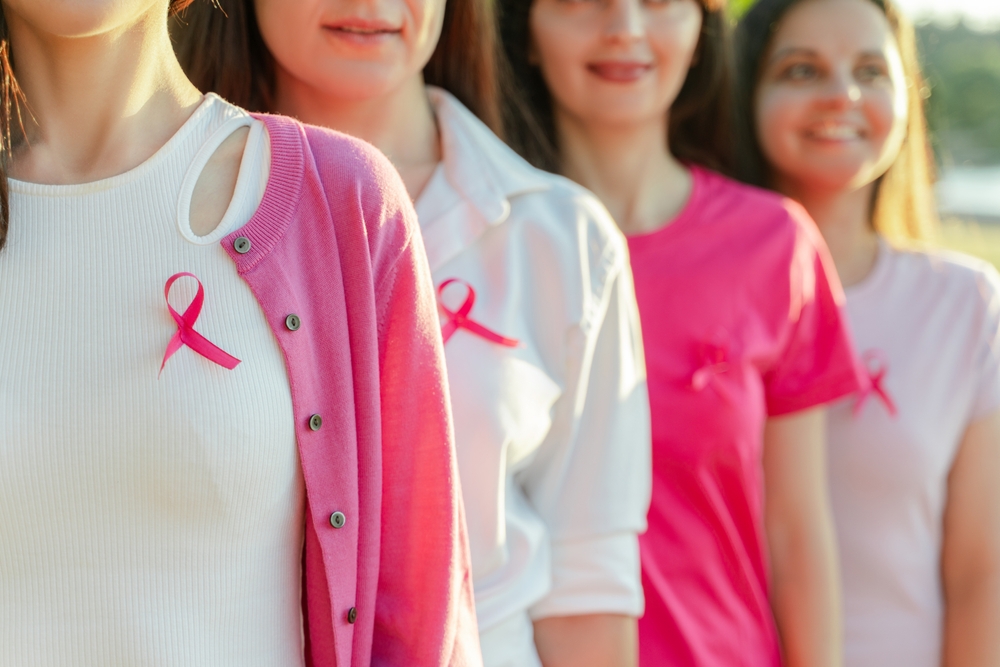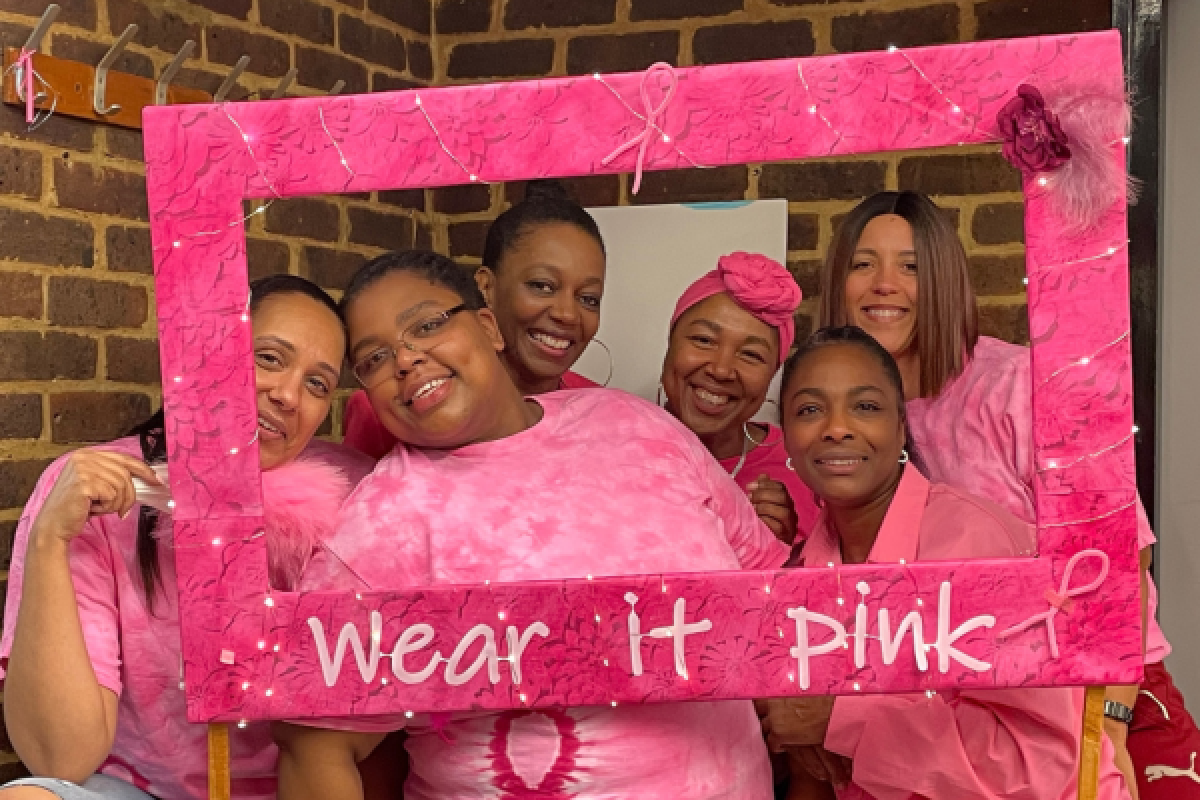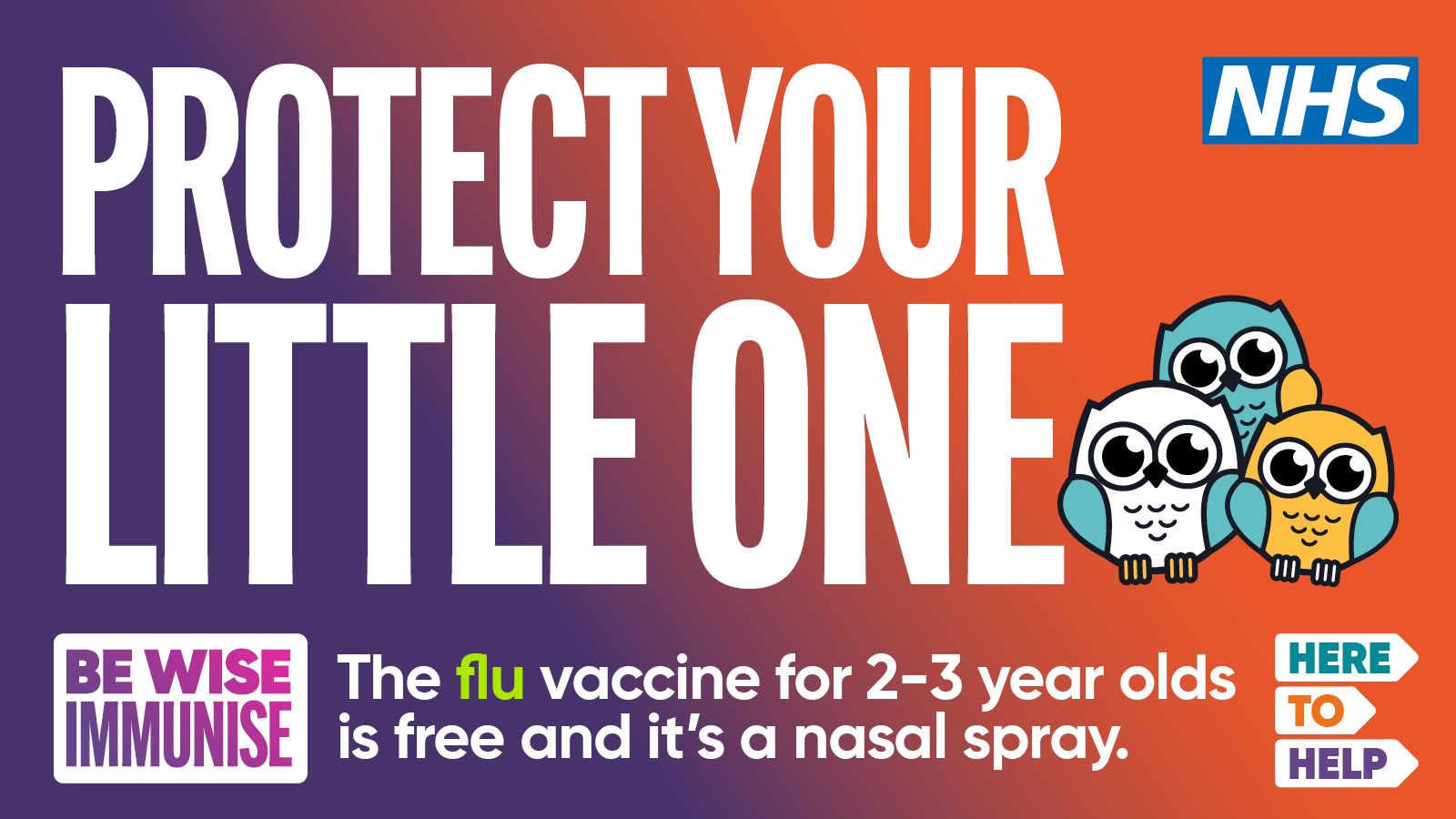- Speak to Breast Cancer Now’s expert nurses now by calling our free and confidential Helpline on 0808 800 6000 or visit forum.breastcancernow.org

19.07.2025
One year to go! Countdown begins for region’s new Eye Hospital
In 2022, mental health was the fifth most common reason given for sickness absence, accounting for 7.9% of occurrences – 15% of UK workers are estimated to have an existing mental health condition.
Mental ill health is now the most common cause of work-limiting conditions among those aged 44 years and younger.
Over the past decade, the number of workers aged 16–34 years who reported that their mental health limits the type or amount of work they can do has more than quadrupled.
Working conditions and environment can also have a significant impact on mental health. In 2022/23, there were an estimated 875,000 workers suffering from work-related stress, depression or anxiety, resulting in 17.1m working days lost.
Poor mental wellbeing costs employers in the UK an estimated £42bn to £45bn annually through presenteeism, sickness absence and staff turnover.
Recent research finds that, on average, there is a positive return on investment of around £5 for every £1 invested in mental health interventions in the workplace.
Last year there were over 7,000 events across the UK on World Mental Health Day, with over 260,000 people having conversations about mental health across their workplaces, schools, homes or the community.
The World Federation of Mental Health said: “By addressing workplace burnout on this World Mental Health Day, we can create a more productive, engaged, and fulfilled workforce.
“A mentally healthy workplace is a thriving workplace. Let’s work together to combat poor mental health and burnout and foster environments where everyone can flourish.”
This year’s theme for World Mental Health Day set by the World Federation of Mental Health is workplace mental health. It highlights the importance of addressing mental health and wellbeing in the workplace, for the benefit of people, organisations, and communities.
The Mental Health Foundation is offering a course where you can learn how to build personal strategies to improve your own mental health and well-being at work as well as supporting others.
The course could be useful if you are working in HR, a manager seeking guidance or a team member wanting to improve your workplace culture. Find out more here.
Find out more about local NHS mental health services here.
Most cancers are diagnosed in patients who have been seen by a GP and referred to hospital for investigation. However, some patients present as an emergency with “alarm” symptoms and are found to have cancer.
Those who present as an emergency often have advanced cancer and have fewer treatment options and worse outcomes than people who are diagnosed with cancer through non-emergency routes. Understanding more about the problem is expected to be an important step towards developing solutions.
The planned study will use interviews with patients and health practitioners to learn about the experiences of people who were diagnosed with cancer as an emergency. This might include learning about what led to a person presenting as an emergency as well as their experiences of that care and their treatment afterwards.
What input are the researchers looking for?
The study is at an early stage of planning and the research team would like to talk to people affected by cancer – with and without experience of emergency presentation – to hear about their experiences and their opinions about the planned study. This will help them to ensure the study will ask useful questions and include the right participants.
As the project progresses, the research team would like input from people to read and comment on study documents such as participant information sheets to make sure the language is appropriate, sensitive, and easy to understand.
Ultimately, they might ask for input to discuss the results of the study and possible next steps.
What would participants be asked to do?
Initially you would be asked to take part in a discussion with one of the researchers, either on your own or as part of a group. This would be online using Zoom or Teams. Later, if you were willing, you might be sent electronic copies of documents to look at and comment on, and/or be invited to a look at the results and discuss next steps.
If you would rather not get involved in the later steps (reviewing documents and results), it’s fine just to take part in the in the first discussion.
If you would rather not talk to the researchers but do have views or experiences you would like to share, you can also email them.
What should I do if I am interested in taking part?
If you are interested in providing input or would like more information, email Adam Biran (one of the researchers at Newcastle University) at Adam.Biran@Newcastle.ac.uk.
Its Walk of Light will be held as part of the week, which runs from Wednesday October 9 to Tuesday October 15.
The procession will gather at the foot of Penshaw Monument at 4.45pm on Monday October 14 for a 5pm start. The event, which is now in its third year, is expected to last around 90 minutes.
Charlotte Mutton is a Specialist Bereavement Lead Midwife, Subsequent Pregnancy Midwife, Pregnancy Loss Bereavement Counsellor and a Bereavement Trainer and Educator at the Trust.
She said: “We’re hosting this walk so we can come together to reflect upon and remember all of the babies who are sadly no longer with us. We know people can find it helpful to be together and this is also a time where they can have a moment to themselves in that shared moment.
“We’re inviting people to bring something with them to light their way to the top of the monument. We’ll also have a small number of lanterns available to use too.
“The walk to the top of the monument will be slow in pace. There will be music and readings as part of a reflection service at the summit and a few moments of pause to remember all babies and children who are no longer with us.
“We’ll then head back to the bottom of the monument, again without any rush to give people time to think or chat to each other. At the bottom of the hill, anyone taking part will have the chance to write their loved one’s name on a heart to hang on our memory tree.”
Christie Woods, a Bereavement Support Worker at the Trust, has played a vital role in organising the upcoming Walk of Light event as part of the Forever Cherished team.
Charlotte would like to thank Christie Wood and Jamie Renilson for their support within the services and in running the event.
There will be refreshments available at the event and the team will also hold a collection to support its Forever Cherished fund.
More details about the support available to those who have faced a loss through pregnancy can visit the Trust’s Maternity Bereavement Service page on its website: https://www.stsft.nhs.uk/services/maternity-new/maternal-mental-health-birth-reflection-and-bereavement-services/bereavement-services
Photo: Charlotte Mutton left specialist bereavement lead midwife and Jamie Renilson midwife right
The research and support charity is calling on all women to ‘get to know their normal’.
With one in ten (10%) women in the UK reporting to have never checked their breasts – which varies region to region, including increasing to 16% for women living in London – and with 13% only checking once a year or less, the charity is urging women to prioritise regular breast checking and familiarise themselves with the signs and symptoms of the disease, to help them spot any new or unusual breast changes, so they can get them checked out by a GP.
According to the YouGov findings, of the women who do check their breasts regularly for possible signs and symptoms of breast cancer, almost a third (31%) don’t feel confident that they would notice a breast change. Furthermore, only 52% of women said they would inform their GP in the first instance, if they noticed a new or unusual change in their breast(s), while 43% of women would want to seek advice, support or reassurance from someone else first.
This is cause for deep concern given around two-thirds of breast cancers in England are found when women detect a new or unusual breast change and get this checked out by a GP***, and the earlier breast cancer is diagnosed, the better the chance of successful treatment, and lives potentially being saved from this devastating disease.
When asked what stops or prevents women**** from regular breast checking, multiple barriers were revealed, including: forgetting to check (48%), not being in the habit of checking their breasts (36%), lacking confidence in checking their breasts (16%) and not knowing how to check their breasts (13%).
Manveet Basra, associate director, public health, inclusion and awareness, at Breast Cancer Now, said: “It’s deeply concerning that over two in five women in the UK aren’t regularly checking their breasts, and that only half of UK women (52%) are reporting a possible sign or symptom of breast cancer to a GP in the first instance.
“It’s clear more needs to be done to educate and support women to ‘know their normal’ and Breast Cancer Awareness Month presents a vital moment to spread these important breast health awareness messages.
“At Breast Cancer Now, we want every woman to know the importance of regular breast checking, and the many different signs and symptoms of breast cancer, so they feel empowered to regularly check their breasts, and get any new or unusual breast changes checked by a GP, along with attending NHS breast screening when invited, and breast checking in between their screening appointments.
“This is so vital when around two thirds of breast cancers in England are found when women detect anew or unusual breast change and get this checked out by a GP, and the earlier breast cancer is diagnosed, the better the chance of successful treatment, and lives potentially being saved from breast cancer.
“With the most notable barrier to women regularly breast checking being that they forget, we’re reminding women to get it back on their agenda. Checking your breasts only takes a few minutes and there’s no right way to check, as long as you’re doing it regularly.
“This could be as part of your self-care routine while getting dressed, showering or applying moisturiser. It’s important to check your whole breast area, your armpits and up to your collarbone (upper chest) for changes. At Breast Cancer Now, we say, it’s as simple as TLC: Touch, Look, Check.”
Breast cancer can cause a number of signs and symptoms which include:
On its own, pain in your breasts is not usually a sign of breast cancer, but look out for pain in your breast or armpit that’s there all or almost all the time.
Although it is rare, men can get breast cancer and the most common symptom of breast cancer in men is a lump in the chest area.
Visit breastcancernow.org/checking for more information on the signs and symptoms of breast cancer. If you’re worried about breast cancer or have a question about breast health, Breast Cancer Now is there to support you every step of the way.

The most common cancer globally with around 2.3m new cases every year, breast cancer represents one in eight cancer cases in both sexes and a quarter of all cancers in women.
With one in six cancer deaths in women worldwide, breast cancer is also the leading cause of cancer deaths among women globally.
October is Breast Cancer Awareness Month, an annual campaign to highlight ways to minimise the risk of developing the disease and to spot any signs you could have contracted it.
About one in four breast cancers can be prevented by modifying risk factors and adopting healthier lifestyle choices. The most important lifestyle choices to consider are to exercise regularly, to maintain a healthy weight and to avoid alcohol consumption. Recent studies have shown that maintaining a balanced diet and body weight can affect breast cancer risks for women 10, 20 or even 30 years later.
Healthy lifestyle choices are important but not enough alone. We must regularly look out for any breast abnormalities and seek medical advice with any concerns. This is known as breast awareness. Some women prefer to perform self-examinations. This can help. But the most important action is to be routinely monitoring our breast for any abnormality and reporting any concerns to your health care provider.
Breast cancer can affect anyone, so it’s important to check yourself regularly and get to know what’s normal for you. If you’re wondering how to be more breast aware, it’s as simple as TLC: Touch, Look, Check.
Could you help us spread the word this October? We want more people to start checking their breasts regularly. Talking to your friends, sharing things on social media or telling your colleagues about it at work – it all helps.
Breast cancer isn’t always easy to talk about. But Breast Cancer Now is listening. The Big Breast Cancer Survey is all about understanding your experience better. The charity wants to get an honest, unvarnished picture of the realities of breast cancer right now.
Breast Cancer Now is creating its next strategy – the plan it will use to guide its work over the coming years. And BCN wants the experiences of people affected by breast cancer to be at the heart of it.
This is your chance to have your voice heard. The more BCN knows, the more it can do to make sure everyone affected by breast cancer lives and is supported to live well.

Wear it pink is back for Breast Cancer Awareness Month, and Breast Cancer Now would love for you to take part!
You’d be joining thousands of people across the UK who’ll be wearing pink on Friday October 18 – at work, at school or in their community. However you wear it pink, every penny you raise will make a difference.
All you need to do to get started is order your free fundraising pack today. It includes fantastic resources, including decorations, tips and ideas as well as a donation box.
And if you need any help, just email wearitpink@breastcancernow.org!
https://breastcancernow.org/wear-it-pink/sign-up-for-wear-it-pink
* Regularly checking your breasts refers to checking at least once a week, once a month or at least once every 6 weeks. All figures, unless otherwise stated, are from YouGov Plc. Total sample size was 2,137 females. Fieldwork was undertaken between 10-12 September 2024. The survey was carried out online. The figures have been weighted and are representative of all GB females (aged 18+).
This advice is about the flu vaccine for adults. There are also pages about the children’s flu vaccine and flu jab in pregnancy.
The flu vaccine is recommended for people at higher risk of getting seriously ill from flu. It’s offered on the NHS every year in autumn or early winter.
You can get the free NHS flu vaccine if you:
Frontline health and social care workers can also get a flu vaccine through their employer.
The flu vaccine is recommended for people with certain long-term health conditions, including:
Most eligible adults will be able to get the flu vaccine from Thursday October 3rd. This may be later than you’ve had the vaccine before, but it means you’ll have the best protection when flu is most widespread.
Some people may have their vaccination from September, including if:
Speak to your GP for advice if you think you need to have the vaccine earlier than October.
If you’re eligible, you may be able to get a flu vaccine from:

Frontline health and social care workers will usually get the flu vaccine through their employer.
If you cannot get a flu vaccine through your employer, you can get it at a pharmacy or your GP surgery if you’re employed:
If you’re aged 18 or over, you can book a flu vaccination appointment at a pharmacy online or in the NHS App now.
You need to book your vaccination before December 20.
You can have the flu vaccine at the same time as other vaccines such as the COVID-19 and shingles vaccines.
It’s not usually given at the same time as the RSV vaccine, but you can have them at the same time if a doctor or nurse thinks it’s needed.
Most people who are eligible for the flu vaccine can have it.
You only cannot have the vaccine if you’ve had a serious allergic reaction (anaphylaxis) to a previous dose of the vaccine or an ingredient in the vaccine.
Some of the flu vaccines used in the UK contain egg protein. Tell the person vaccinating you if you have an egg allergy.
If you have a high temperature, wait until you’re feeling better before having your flu vaccine.
There are several types of flu vaccine given in the UK. If you’re eligible for the flu vaccine on the NHS, you’ll be offered one of the types that’s most appropriate for you.
You can check the ingredients in the patient leaflets here.
The most common side effects of the flu vaccine are mild and get better within one to two days.
They can include:
More serious side effects such as a severe allergic reaction (anaphylaxis) are very rare. The person who vaccinates you will be trained to deal with allergic reactions and treat them immediately.
The injected flu vaccines used in the UK do not contain live flu viruses. They cannot give you flu.
Find out more about why vaccinations are important and the safest way to protect yourself
The flu vaccine aims to protect you against the most common types of flu viruses.
There’s still a chance you might get flu after getting vaccinated, but it’s likely to be milder and not last as long. The vaccine usually takes up to 14 days to work.
Protection from the flu vaccine goes down with time and the types of flu virus the vaccine protects against are updated each year. This is why it’s important to get the flu vaccine every year.
Source: https://www.nhs.uk/vaccinations/flu-vaccine/
That’s why it’s important to check your eyesight regularly and, if there is a problem, be able to access the support you need.
However, many people are facing long waits and high costs for eye care.
Some groups of people, such as certain ethnic minority communities and those on lower incomes are also more likely to experience poor eye health and have poor experiences of eye care services.
As part of the #ShareForBetterCare campaign, we want to know about your experiences of eye care. We want to know:
Your views are vital to helping improve eye health and other NHS services in your area. It helps local NHS managers understand what is working and what they need to fix.
This National Eye Health Week (Sept 23 to 29) Healthwatch is asking people to complete a short online survey which aims to understand people’s experience of accessing eye care locally, as well as the experience of those waiting for secondary care. We also want to uncover what is working but also the barriers people face, like cost.
The survey, which can be accessed via the link below, closes this Sunday September 29:
https://bit.ly/eye-care-survey

[1] https://fingertips.phe.org.uk/profile/vision
[2] https://www.england.nhs.uk/statistics/statistical-work-areas/rtt-waiting-times/rtt-data-2024-25/
[3] https://media.rnib.org.uk/documents/Circumstances_sight_loss_report.pdf
[4] https://www.rnib.org.uk/professionals/health-social-care-education-professionals/knowledge-and-research-hub/key-information-and-statistics-on-sight-loss-in-the-uk/
Latest news
Quick online NHS services